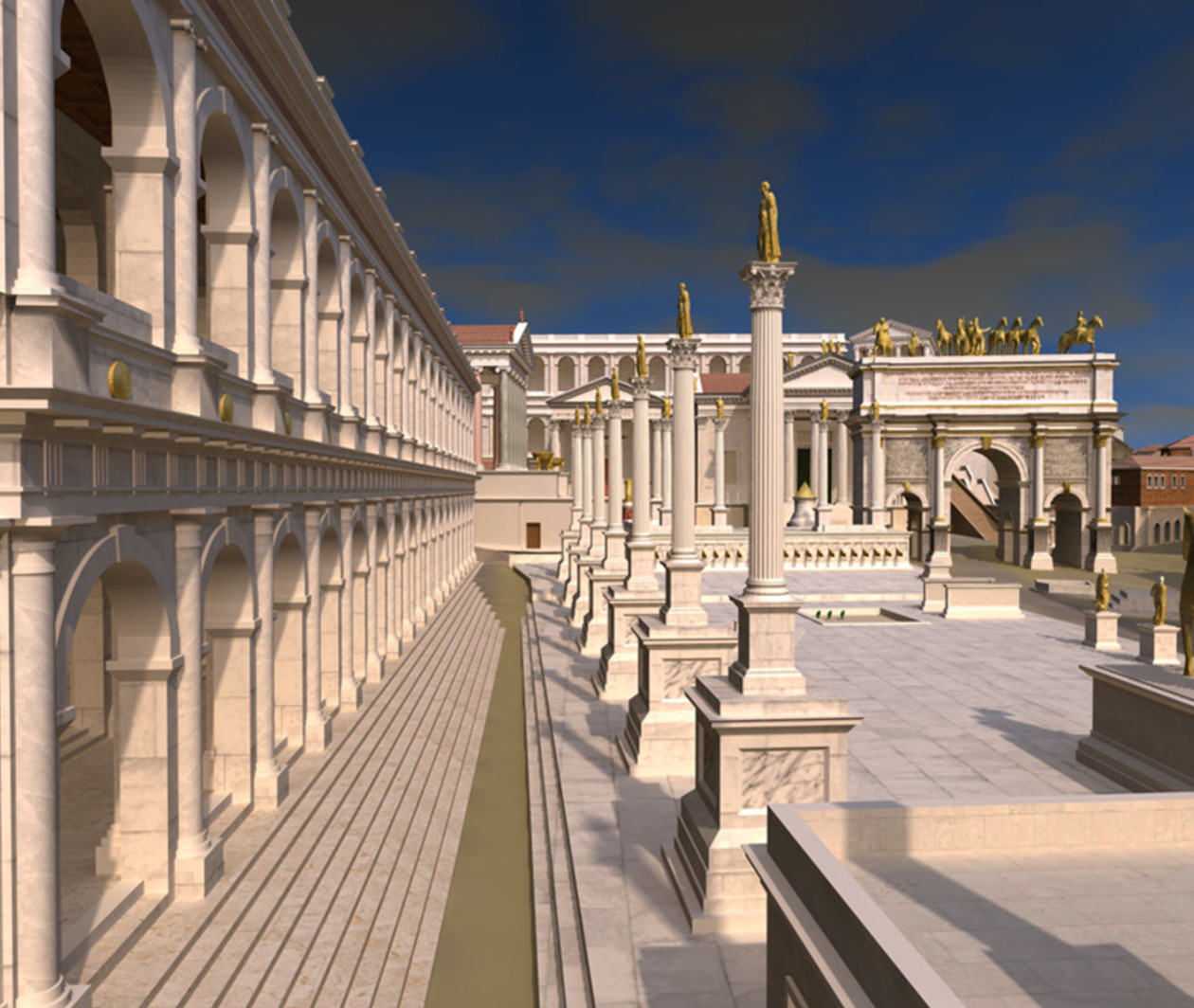Explore the architecture and history of Rome, walking around a 3D digital model of the ancient city, with this free online course.

Duration
5 weeksWeekly study
3 hours
Rome: a Virtual Tour of the Ancient City
Explore ancient Rome through a unique, historically accurate 3D model.
Take a guided tour around ancient Rome with expert Dr Matthew Nicholls, using his detailed and award-winning 3D digital model of the city. Explore Rome’s architecture and how it was used - how did Romans worship their gods and meet their political masters? How was drinking water supplied to the city’s million inhabitants? Moving seamlessly between footage of contemporary Rome and the digital model (including interactive elements), you’ll explore these questions and much more.
Use this insight to inform your own encounters with the eternal city and the study of ancient history more generally.
What topics will you cover?
Week one: Ancient Rome location and infrastructure
- Geographical and historical overview
- Introduction to the digital model
- Roman building materials and techniques
- The importance of aqueducts and sewers
- Using coins to illustrate ancient architecture
Week two: Political architecture in Ancient Rome
- The Imperial Fora
- The function and development of the Forum
- Types of monumental architecture
- Using poetry as evidence to investigate the past
Week three: Religious architecture in Ancient Rome
- Overview of Roman religion
- The architecture of the Capitoline Hill
- Developments in Imperial temple architecture
- Worshipping the gods
Week four: Life and death in Ancient Rome
- Overview of Roman housing
- Food supply in the ancient city
- How the Romans liked to be remembered
- Using inscriptions as evidence to investigate the past
Week five: Bread and circuses (entertainment architecture) in Ancient Rome
- The importance of entertainment for Rome’s rulers
- The architecture and function of theatres and circuses
- Roman baths and bathing
- Using evidence to understand the Colosseum
When would you like to start?
Start straight away and join a global classroom of learners. If the course hasn’t started yet you’ll see the future date listed below.
Available now
Learning on this course
On every step of the course you can meet other learners, share your ideas and join in with active discussions in the comments.
What will you achieve?
By the end of the course, you‘ll be able to...
- Explore different categories of building within the city, and the functions they housed
- Investigate a range of evidence including archaeological remains, coins, literary texts, and inscriptions to learn how we can understand and interpret the ancient past
- Discuss the way the rulers of Rome used architecture to adorn the city and keep it functioning
- Experience digital modelling as a way of presenting the ancient past, exploring models on screen and in videos and discussing what they can show us
Who is the course for?
This course is open to anyone with an interest in discovering more about ancient Rome. You might be: planning a visit to the Italian capital; an avid watcher of documentaries on Roman history; or considering studying archaeology, classics or history at university.
What do people say about this course?
"Diving in those marvellous virtual tours was something new for me and also very informative. Thank you very much."
"A very interesting, engaging course. Thank you, Matthew! I hope to find many of these sites when I am in Rome for the first time in October. As for the "eternal" question of which emporer had the biggest impact, my initial thought was Augustus and I'm even more sure of my answer having completed the course. He not only built many great structures but set the standard that others followed in building and growing this great city."
Who will you learn with?
Dr Matthew Nicholls is a Roman historian at the University of Reading, specialising in the 3D reconstruction of ancient spaces. He also directs the University's Open Online Course programme.
Learning on FutureLearn
Your learning, your rules
- Courses are split into weeks, activities, and steps to help you keep track of your learning
- Learn through a mix of bite-sized videos, long- and short-form articles, audio, and practical activities
- Stay motivated by using the Progress page to keep track of your step completion and assessment scores
Join a global classroom
- Experience the power of social learning, and get inspired by an international network of learners
- Share ideas with your peers and course educators on every step of the course
- Join the conversation by reading, @ing, liking, bookmarking, and replying to comments from others
Map your progress
- As you work through the course, use notifications and the Progress page to guide your learning
- Whenever you’re ready, mark each step as complete, you’re in control
- Complete 90% of course steps and all of the assessments to earn your certificate
Want to know more about learning on FutureLearn? Using FutureLearn
Learner reviews
Learner reviews cannot be loaded due to your cookie settings. Please and refresh the page to view this content.
Get a taste of this course
Find out what this course is like by previewing some of the course steps before you join:
Do you know someone who'd love this course? Tell them about it...
You can use the hashtag #FLvirtualrome to talk about this course on social media.
More courses you might like
Learners who joined this course have also enjoyed these courses.
Browse more in History
